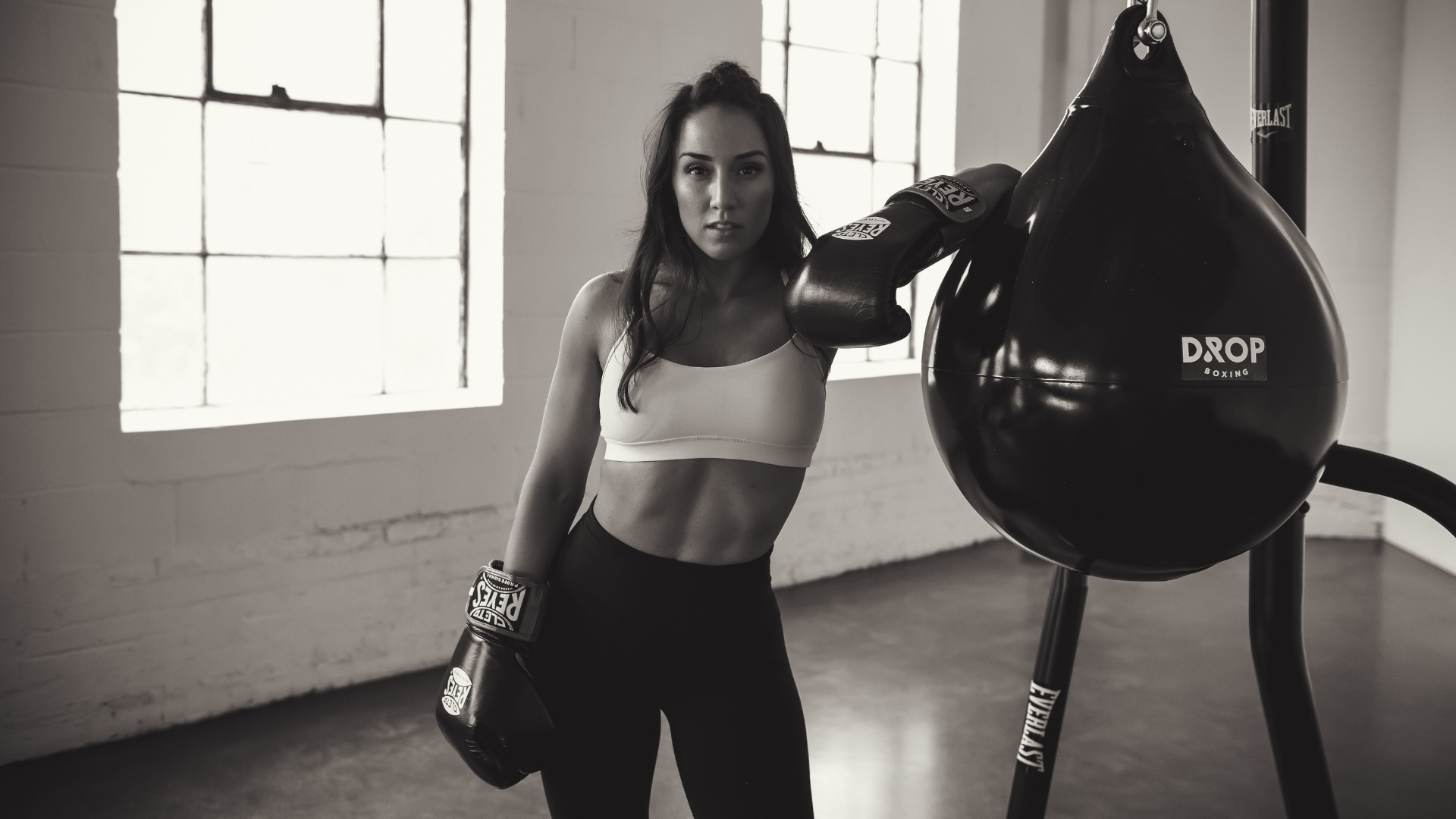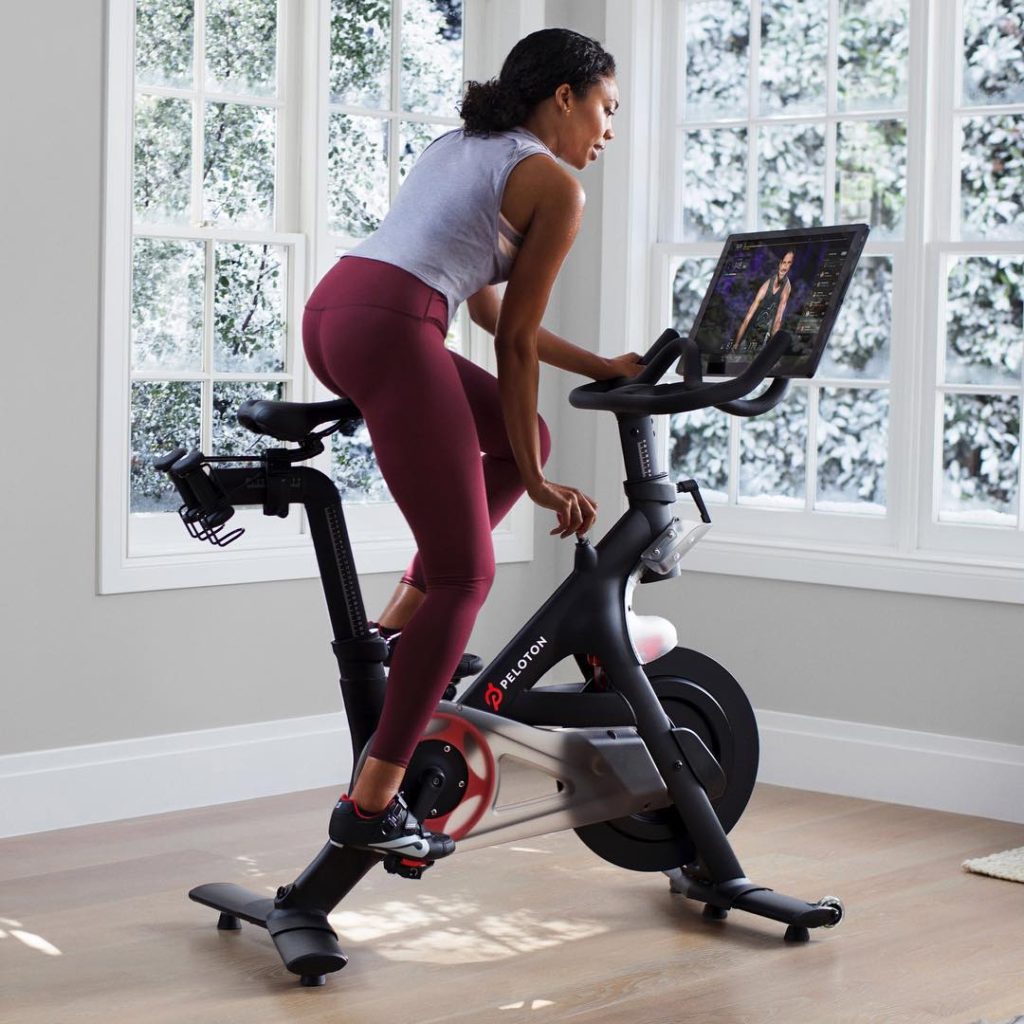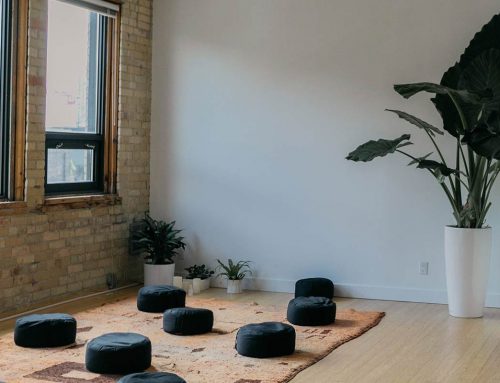From stress-busting Drop Boxing to at-home Peloton and aquafit classes at your local Y, these workouts ease the ‘work’ out of getting in shape.

Drop Boxing
Ever since a friend told me she would think of her boss as she boxed her way to a flat stomach, I’ve wondered if I should try boxing. Like too many other people, I’m stressed as all hell, which interestingly enough is why longtime fitness enthusiast Lara Marquez founded the 5,000 square foot Drop Boxing and Athletic Wellness facility in Toronto (161 Spadina Ave).
“Our minds are so busy and consumed,” says Marquez. “I don’t know a single person that doesn’t feel overwhelmed with their day-to-day responsibilities. We don’t get the opportunity to release that energy constructively in a physical way.”
“When you are boxing, your concentration is so busy running through the punches, that there is no room for stressful thoughts,” says Marquez who feels mental release of stress is “the number one benefit of boxing.”
Drop Boxing also puts this shine on a sport more often viewed as rough and tumble than elevated and urbane.
“Toronto lacked a boxing gym that was more than just a bunch of heavy bags and stinky gloves,” says Marquez who, after research and travel across North America and the United Kingdom, sensed the city was ready for a space that offered a, “guaranteed workout but also a place that has style and a vibe.” On entry, Drop Boxing features stark white walls lined with “#likeachamp” merch and pristine Kimurawear boxing gloves that undergo a 24-hour cleaning process after each use to eliminate bacteria.
Like spinning, Drop Boxers can register and check-in online to secure their bag. The actual “ring” is a dimly lit, climate controlled room divided in two sections; half the room has a dozen tear-drop shaped aqua bags (the fluid inside minimizes the impact on the shoulders and wrists), the other half of the room has an equal number of benches equipped with free weights. Each class incorporates rounds of boxing combos, burnouts and strength training while instructors in headsets call out drills and punch combos to the strains of a nightclub quality playlist and sound system. Best of all, the black-light setting is forgiving of even the newest boxer, which makes Drop Boxing a safe space for all levels.
In-house perk: Custom gel quickwraps that go around the fists fast (no more tangled straps) add a soft layer of cushion above the knuckles. This reduces the pain of impact allowing the boxer to concentrate on their swing and form.
Why it doesn’t feel like a workout: The nightclub lighting is very forgiving for a not-so-confident boxer (me). And since boxing in a group setting is a safe way to release aggression without hurting anyone, this sweaty workout has a more holistic edge.
Two More Workouts That Don’t Feel Like a Workout

Aquafit
When someone told me they’d incorporated a deep water aquafit class into their Tough Mudder Training, I was floored. Aquafit seemed the purvey of older individuals and those recovering from injuries. Well, you can thank an aging population for boosting the availability of aquafit classes and spreading its broad-based appeal (check out the schedule at your local YMCA, where aqua-activities are always offered).
Evening sessions draw the younger after-work crowd who want to spend an hour bobbing in the water while doing stomach crunches, squats and pushups. Water is denser than air, so moving through H2O puts more external pressure on your limbs than out-of-water training. “Water is ‘Liquid Weight,’” explains Beverley Stephenson of the Toronto YMCA. “You are moving water in and water is heavy. Lift a jug of water and you know it’s heavy.” If looking for something tougher, you might want to try Water Run (where you literally run underwater) or Swimfit which includes interval training and endurance drills in the pool.
In-water perk: Breathing is a big topic as we combat pesky stress levels. In the water, proper breathing is essential. At the gym, we’re all tempted to skip an intake of air to complete an action. Water activities require deep, purposeful breaths.
Why it doesn’t feel like a workout: First, you don’t sweat. “The pool water is cooler than your body temperature so it helps to thermally regulate you,” says Stephenson. Second: if you like water, aquafit is pure joy, and it won’t incapacitate you two days out like a HIIT class might, but maybe that’s ok. Apparently joy is good for your health too.

Peloton
If you haven’t heard of Peloton, you’re clearly living under a rock—or not listening to any podcasts. The at-home indoor-cycling concept, dubbed by some as the Netflix of fitness, allows bikers to exercise on a proprietary bike while streaming classes filmed at one of two U.S. studios. The selling point here is just how immersive Peloton can be from the comfort of home. The screen (attached to your bike) and headphones place you in-studio with instructors that are half-coach, half-motivational speaker, talking you through every pedal. The catch is cost—each stationary bike will set you back $2,950 and monthly subscriptions are $49.
In-house perk: Umm, being in your house? Inspired by the the time-crunched class torn between work and family, Peloton solves the getting-to-the-gym conundrum, while giving riders a studio experience they’d never find on YouTube.
Why it doesn’t feel like a workout: Peloton’s on-screen metrics push you. You see your resistance, distance and speed, and know who the best riders are. Even I was able to work up a serious cardio sweat without anyone watching me. This says a lot about Peloton’s subversive power.





